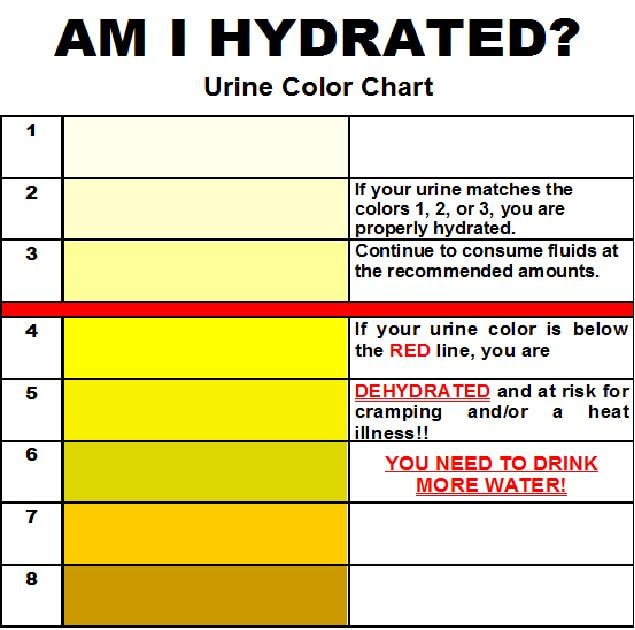Being in a dehydrated state is basically boiled down to consuming fewer fluids than you put out. The gold standard of preventing this from occurring is staying hydrated with drinking water. Staying hydrated is not only important for normal bodily function but it may even improve physical activity by delaying fatigue. Losing 1% of water can affect physical output especially in a warm environment.
Factors that increase the risk of dehydration:
1. There are multiple factors that may cause dehydration.
Individuals who partake in prolonged activity in combination with heavy sweat volume increases electrolyte loss, thus increases your chances of facing dehydration symptoms
2. Outside temperature and humidity will increase sweat volume, thus increasing chances of dehydration. Even colder weather can increase your chance of dehydration due to moisture loss and dry air, especially in higher altitudes. You need to increase your fluid intake during higher and lower temperatures.
3. Beverages containing alcohol and caffeine may also increase the risk of dehydration. These beverages are known to be a diuretic, which increases urine output. Increased urine output may deplete electrolyte balances within your body.
4. Illnesses such as influenza, bronchitis or bladder infections can cause abnormal hydration loss. Making sure to drink fluids while suffering from minor illnesses should be part of any recovery process.
Symptoms of Dehydration
· Extreme thirst
· Less frequent urination
· Dark-colored urine
· Fatigue
· Dizziness
· Confusion

What are Electrolytes, And Why Are They Important?
Electrolytes play a vital role in the body and if we lose too many of them we could diet. Likewise, if we have a buildup of any one particular enzyme we could seriously disturb the normal function of the body. Electrolytes are Sodium, Chloride, Calcium, Magnesium, and Potassium.
· Calcium – Most of our calcium in our body is in our skeleton and our teeth but the remaining calcium is found as ionized calcium, as an electrolyte. As an electrolyte, it regulates the normal function of our heartbeat and blood clotting. The Recommended Daily Allowance (RDA) is between 1000 and 1300 mg per day. Foods high in calcium are milk and dairy products, green vegetables, nuts, and fish.
· Sodium – The most important electrolyte in the fluid outside the cells and regulates the amount of fluid that can go into the cell and amount of plasma in the blood. It also plays a pivotal role in the acid-base balance of the body. There is no current RDA for sodium but most of us already consume enough sodium in our current diet. Many experts recommend not exceeding 2g of sodium, which represents a sodium chloride (table salt) intake of not more than 5 g per day (WHO, 2012).
· Magnesium – Most of our magnesium is also found in our bones, but a small percentage is found in the fluids outside our cells. Low levels of magnesium can be life-threatening due to its role in enzyme reactions. RDA recommends a range of 310-420 mg per day depending on age and gender. Foods high in magnesium are green leafy vegetables, legumes, whole grains, and brown rice.
· Potassium – The other electrolyte that is responsible for maintaining the acid-base balance and water balance. Potassium must keep the balance of dehydration and water intoxication in check. Calcium and potassium also work together to regulate nerve and muscle activity, low levels can result in low glycogen storage in the muscle, thus inhibiting athletic performance. There is no particular RDA for potassium, but a person should have at least 4700 mg/ day. Foods high in potassium include fruits, vegetables, meat, and dairy.
Other Foods to help maintain proper hydration:
Watermelon, Celery, Bell Peppers, Cauliflower, Broccoli, Grapefruit, Oranges, Strawberries, and Spinach.
Hydration, Before, During, And After Exercise
When you feel thirsty, you are already in a dehydrated state. A great tip to make sure you are consuming water throughout the day and avoiding thirst is to keep a reusable water bottle with you. You will be surprised how much more water you will drink when it is readily available. There is no official set intake recommendation for how much water or fluid should be consumed daily, but a good rule of thumb is ½ your body weight in ounces. Fluid needs vary from the duration of physical activity, environmental conditions, heat acclimation, and fitness level. Proper hydration before, during, and after exercise is critical for performance. Below are some recommendations to keep in mind for your next workout, or training day.
Before Exercise:
17-20 ounces of water or sports drink 2-3 hours before exercise
During Exercise:
Periodic drinking. Replace but do not exceed sweat losses. Roughly 7-10 ounces every 10-20 minutes
After Exercise:
Rehydrate within 6 hours of exercise.
Written by Matt Dengler, M.Ed, MS, RD, LDN, of RXRD Nutrition.
Resources:
Casa DJ, Armstrong LE, Hillman SK, et atl. National Athletic Trainers’ Association position statement: fluid replacement for athletes. J Athl Train. 2000;35(2):212-224
Inter-Association Task Force on Exertional Heat Illness. NATA News. 2003;6;24-29
Karpinski, C., & Rosenbloom, C. (2017). Sports nutrition: A handbook for professionals(6th ed.). Chicago: Academy of Nutrition and Dietetics.
Krause’s Food and the Nutrition Care Process,13th Edition. Elsevier, USA
WHO (2012). WHO. Guideline: Sodium intake for adults and children. Geneva, WHO, 2012.)

